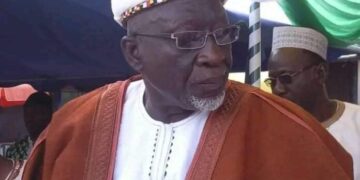In November 2015, President Mahama performed the Constitutional ritual of constituting a committee to review the emoluments of Article 71 class of public sector workers.
The Committee had five members and was chaired by Prof. Dora Francisca Edu-Buandoh.
The Committee presented its report in September 2016. Given that the elections were just around the corner and politicians, including the President, were crisscrossing the country canvassing for votes, the report did not receive much attention.
As expected, after December 7, the Committee’s report has become one of the most sought after document in the corridors of power. The impression once again created is that the work of Presidential Emoluments Committee (PEC) is all about awarding fat ex-gratia to politicians, an issue the Committee itself lamented in its report.
Media reports suggest that the committee’s report and the accompanying recommendations have been accepted.
We are also told that as a group the Article 71 public office holders are to enjoy 10 percent annual increases starting from 2013.
However, what remains unclear are: (i) what exactly the report says or recommends and (ii) what has actually been approved between the Executive and the Legislature.
In this write-up I assess what the specific recommendations of the Committee are and juxtapose them with what has actually been approved between the executive and the legislature.
I will also compare the absolute figures of salaries and their rates of increase with what pertains in the larger public sector where wage brakes has been applied in the last four years by the executive as part of measures to reduce the runaway fiscal deficit.
The intention is to provide accurate information. The figures being thrown around are not correct figures of the actual increases.
The acceptance of the Committee’s report by government came with a revision of the figures. The revised figures have been hidden from the Ghanaian public.
What did the Committee recommend?
The Committee’s report is 81 pages, including annexes. The Committee did a fantastic job.
It recommended many things bordering on how the nation remunerates and resettles its top politicians and officers.
Most of these recommendations have, indeed, been accepted by, government as reported by the media.
Three key recommendations were, however, rejected, or I should say, revised.
The first of these is the recommendation that the salary relativity among the three arms of government as approved by the late President Mills following the report of the Ewurama Addy Committee be restored.
The Ewurama Addy Committee sought to establish a salary structure for the Article 71 public office holders with clear and justifiable relativities.
That Committee adopted a point system in which the President was used as the anchor with 100 points.
In descending order, the Vice-President, Speaker of Parliament and the Chief Justice became the anchor for the Executive, Parliament and the Judiciary respectively. The Vice-President was awarded 90 points.
This means the Vice-President was expected to receive 90% of whatever the President receives as monthly pay.
A member of parliament was awarded 50 points. This implied that an MP would earn 50% of what the President earns.
At the time, Parliament kicked against this relativity and compelled President Mills to raise them to 60 points.
This meant that the awarded points for those above MP, such as the MPs who doubled as ministers, had to change. (The approved salary structure can be found on page 36 of the Edu-Buandoh Committee report).
But this was only the first stage of the organized and honourable strike against the recommendations of the Ewurama Addy Committee.
The MPs also kicked against the recommended 10% annual increases in their pay from 2009 to 2013.
Instead, they demanded, and President Mills approved for them, 20% annual salary increase for the period.
All the others got 10% annual increase. These awards completely distorted the approved salary structure, leading to the current situation where the Speaker of Parliament is paid higher than the President of the Republic.
The two Deputy Speakers, Majority and Minority leaders as well as MPs with cabinet ministerial positions earn more than the Vice-President.
By the end of 2012, MPs were receiving 78% of the President’s pay instead of the approved 60%.
The present Committee (Edu-Buandoh) recommended that the relativity as demanded by the MPs and approved by President Mills be restored.
For this to be achieved, Parliament and also the Judiciary (which in July 2016 got additional 10% salary raise on top of what they received in 2012) necessarily have to mark time in terms of wage increases.
The Committee therefore recommended a 10% salary increase across board for the 4-year period between January 2013 and January 2017.
This translated into 2.41% annual increase for MPs and Justices of the Superior Court of Judicature.
For all others who did not benefit from the 20% annual increases between 2009 and 2012, the Committee recommended annual increase of 9.41%.
Thus, the media reports about the Edu-Buandoh Committee recommended 10% annual salary increase for all Article 71 Officer Holders is inaccurate.
Our Honourable men and women in Parliament have revolted again. They have rejected the attempt to restore the approved relativity that is based on the Ewurama Addy report, and which the present Committee has strongly recommended.
Instead of MPs receiving 60% of the President’s pay they are demanding 64%. Reliable information indicates that this demand by, the MPs has been approved by both the President and Parliament.
In addition, the MPs have also rejected the differential salary increases meant to restore the relativities approved in 2012.
They are demanding 10% annual increases across the board from January 2013 to January 2017. Once again, the President has approved this demand.
Finally, the Committee’s recommended formula for determining ex-gratia awards for the various categories of public office holders has also been rejected. In its place, all qualified officers are to receive 4 months’ salary for each year of service.
This means an MP who has served 4 years will receive 16 months’ pay as ex-gratia. The recommended formula by the Committee had sought to link the ex-gratia to the general performance of the economy.
The formula incorporated Gross Domestic Product (GDP) per capita and inflation rate.
In terms of figures, the 10% annual salary increase combined with an adjusted relativity of 64 percent of the president’s pay means that an MP, with no Ministerial or Deputy Ministerial portfolio, would receive GHC19,430.75 at the end of every month.
For the President, the 10% annual salary increase will translate into GHC30,359.43 per month while for the Speaker of Parliament, the 10% annual salary increase with approved relativity of 80% to the President’s pay translates into monthly pay of GHC24,287.544. These figures are backdated to 2013 (see table 1 for details).
Table 1: Approved Salary for Selected Article 71 Office Holders (GHC)
Office Holder 2016 2015 2014 2013 2012
MP 19,430 17,663 16,057 14,598 14,598
Speaker 24,287 22,079 20,072 18,247 18,247
President 30,359 27,599 25,090 22,809 22,809
This is in sharp contrast to what the Committee recommended, which is actually what is in the public domain. Per the Committee’s recommendations, an MP would have received GHC13,686.00 per month in 2016 based on the recommended annual increase of 2.41% , which translates into 60% of the President’s pay.
The President would have received a monthly salary of GHC22,809. The Speaker would earn GHC17,791.00 monthly (see table 2 for details). These are the figures the media is quoting. But they were rejected. The President approved them earlier but Parliament rejected them. The President yielded to the demands of the leadership of Parliament as enumerated above.
Table 2: Recommended Salary Levels for Selected Article 71 Office Holders (GHC)
Office Holder 2016 2015 2014 2013 2012
MP 13,686 13,364 13,049 12,742 12,442
Speaker 17,791 17,372 16,963 16,564 16,174
President 22,809 20,865 19,087 17,460 15,972
In the interest of fairness and equity, let us compare these figures with the figures from the Single Spine Salary Structure of the public service. In 2016 the least paid public sector worker on the Single Spine earned GHC207.90 per month.
This translates into a mere one percent of MPs pay as approved. The least paid public sector worker on the single spine would have to work for more than 7 and half years in order to earn the one month pay of the MP.
The highest paid public sector worker earns a monthly salary GHC4,325.20 in 2016. This translates into 22% of the MP’s monthly pay.
The approved figures mean that between 2013 and 2016, the President’s nominal pay has gone up by about 74%.
Those of the MP and Speaker have gone up by 56% and 50% respectively. For public sector workers on the Single Spine, there has only been 30% nominal wage increase between 2013 and 2016.
For Ex-gratia, the rejection of the Committee’s formula and a continuation of the status quo mean that qualified Article 71 office holders will take home 4-month salary for each of the years that they have been in office. This means an MP will take home about GHC270, 992.
The Speaker of Parliament will take home GHC338, 740 and the President will receive GHC423, 428.
Public sector workers subsisting on the Single Spine are not awarded ex-gratia when they retire.
Public sector workers used to receive End of Service Benefit (ESB) (the equivalent of ex-gratia). But the Provisional National Defence Committee (PNDC) abolished the ESB in 1991.
Source: Finder

































